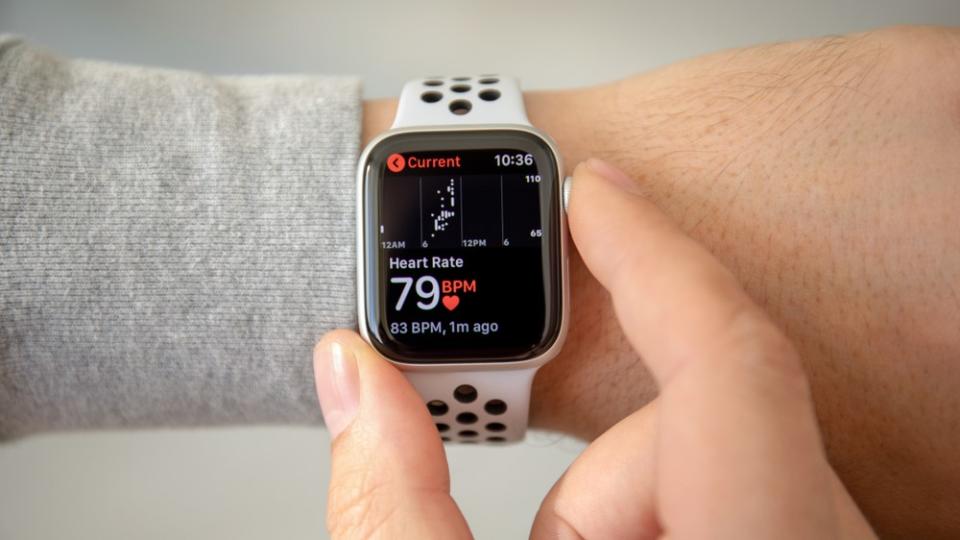Future and its syndication partners may earn a commission when you make a purchase through links to our articles.
Credit: Getty/Ben Welsh
Cardio isn’t everyone’s first choice – some of us like to lift heavy weights in the gym, while others prefer a gentle yoga class or a strengthening Pilates workout.
However, there’s a minimum number of minutes you could (or should) devote to cardio to get the most out of it without trying to cram another workout into your busy schedule. And unsurprisingly, it depends on your goals.
Current AHA guidelines recommend at least 150 minutes of moderate-intensity cardio per week and/or 75 minutes of vigorous aerobic activity (think HIIT).
But how can the same number apply to everyone? While these numbers can help people stay more active and reduce overall sitting time, they don’t take into account individual ages, goals, and fitness levels.
Here’s what you should really be thinking about the next time you add more cardio minutes, and why it matters.
How much cardio do you need?

Credit: Shutterstock
Cardiovascular exercise strengthens the heart and lungs and reduces the risk of chronic diseases such as diabetes. The higher the intensity you put in, the less you may need to do to get the benefits, as research shows that pace (or intensity) is a potentially more important metric than step count. For many people, a combination of intensity can help them reach their goals and stay consistent.
As mentioned above, the guidelines suggest that we should aim for 150 minutes of moderate intensity cardio per week. But fear not, you can spread this effort over days.
For example, 30 minutes of walking five days a week would be enough to reach this quota. Moderate-intensity cardio should get your heart rate up and hold a conversation with a friend at the same time.
Knowing your Rate of Perceived Exertion (RPE) will help you determine what that looks like, but aim for around 5/10 or 60-70% of your maximum heart rate (more on that below). For example, consider going for a brisk walk with your dog or going for a steady jog. Other examples include dynamic yoga and some types of Pilates.
Vigorous intensity cardio looks like 7/10 effort or more, or 80-90% of maximum heart rate, working near maximum capacity; this could include a HIIT class, sprint or spin classes. 75 minutes is enough to reach your weekly quota, and you can split them up however you want.
For example, just one 60-minute workout like CrossFit would leave you with just 15 minutes to complete. Other activities include playing tennis, dancing or hiking.
The minimum recommended guidelines are 150 minutes of moderate-intensity cardio and/or 75 minutes of vigorous-intensity exercise per week. However, some people can manage 300 minutes of moderate intensity and 180 minutes of vigorous activity.
Note that these are guidelines. If you’re training for an endurance race like a marathon or Hyrox, your cardio goals will be higher and you’ll likely stick to your training plan.
Current activity level, health and age are also important, as you may need to start slowly and build up, or you may start with 300 minutes of moderate-intensity exercise per week or 180 minutes of vigorous activity if you are well-trained.
Stamping the same number on everyone ignores individual goals and health, so try to start with a manageable amount and increase when you feel ready. Working with a personal trainer or running coach is also a safe and effective way to create a plan tailored to you if you’re not sure where to start.
How to measure heart rate zones

Credit: Shutterstock
By strapping on one of the best fitness trackers to accurately measure your heart rate zones, you can take the guesswork out of it. If you don’t have one, you can calculate your resting heart rate and measure your zones from there.
To calculate your resting heart rate, simply find your pulse, then count the beats for 30 seconds and multiply by two. To calculate your maximum heart rate, subtract your age from 220.
A lower resting heart rate is generally associated with better cardiovascular fitness and better overall fitness and health. A naturally high resting heart rate can increase the risk of cardiovascular disease and can be caused by medical conditions or lifestyle factors.
Bottom line

Credit: Shutterstock
In addition to at least 150 minutes of cardio, nutrition and resistance training will further improve your health, help you manage weight, build strength or build muscle.
Whatever your goals, consistency is key. Improving your routine over time (weeks and months) will see results without the burnout you’re looking for in sustainable workouts.
Research shows that strength training as little as twice a week can be enough to see results, and national guidelines suggest the same. Again, this can be broken down into 20 or even 30 minute efforts, and you can even combine cardio and resistance training or high and low intensity efforts. Chunking is known as exercise snacking and will help you get results without overdoing it.
For example, you can go for a brisk hike or walk for 30 minutes in the morning and then go to the gym to weigh yourself or go for a bike ride later in the day. Even two muscle-strengthening activities per week are enough to see results.
Regardless of how you break things down, do some activity each day that gets you up more often. NEAT (Non-Exercise Activity Thermogenesis) refers to energy expenditure outside of specific workouts; it could be gardening, taking calls while standing up, playing with the grandkids or hanging out with the dog. You can even add weight to your gentle walks by wearing a heavy backpack or ankle weights, for example.

